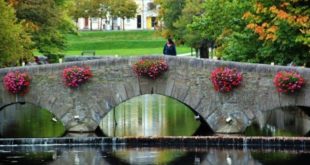A trip to the Loire Valley , in the center of France , has as a compulsory stage the visit to the city of Orleans .
It is the capital that was the capital of France in the 10th century and is currently the capital of the Central Valley Region of the Loire .
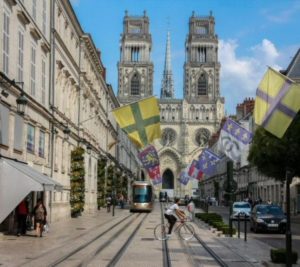
Curiosities history of Orleans
With 120,000 inhabitants today, the history of Orleans has a long tradition linked to the activity of transporting goods by boat on the Loire River .
Now it is known as the city of cosmetics , because in Orleans are concentrated the most important companies in this sector in France.
But as a curiosity I will tell you that in the past it has been known as the city of vinegar because in the 16th and 17th centuries it even had up to 300 companies that produced it.
Precisely this activity arose at a time when the wine was transported by the river and a lot of it arrived vinegary, but at present in the city there is only one company that produces and markets vinegar.
In the face of your visit, I tell you that Orleans is one of those French cities where tranquility reigns, as, for example, Poitiers .
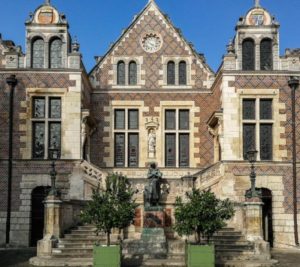
This is largely due to the fact that the university is located on the outskirts of the city, about 10 kilometers away, so that Orleans is not characterized by a great university environment, such as Rennes .
From the tourist point of view, the year 2000 was a before and after in the most recent history of the city of Orleans , because it was when the Loire Valley was declared a World Heritage Site by Unesco .
Also coincided the arrival of a new mayor who decided to recover the historic center , which by then was very degraded and even was an unsafe area.
The result is that now Orleans is one of the cities most visited by those who, for example, make the cycle route of the Loire Valley , the longest and busiest in France.
It shows that this great boom of tourists who travel by bicycle in this area is that the trains that connect the cities of the Loire , from Orleans to Tours , carry special wagons with large reserved space on their lower platform to transport bicycles.
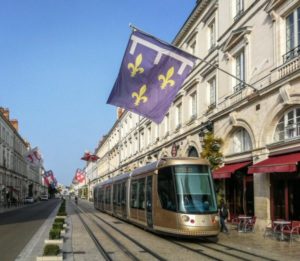
What to see and do in Orleans
When you start your visit to the city, the first thing you will notice is the great importance of the figure of Joan of Arc , a character in the history of Francewho currently represents the feeling of being French in certain areas.
Equestrian statue of Joan of Arc
The best example of this importance is the presence of an equestrian statue of Joan of Arc in the center of the current heart of Orleans , Martroi Square .
And its good there are many people who think that Joan of Arc , known as the Maid of Orleans , was born or lived all her life in this city, in fact she was only in the same 10 days.
It was on the occasion of the famous battle in 1429 in which he freed the city from the siege of the English during the Hundred Years’ War .
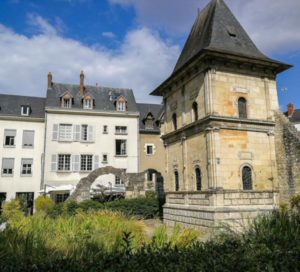
House of Joan of Arc
Linked to this figure, in Orleans you can visit what is known as the House of Joan of Arc , which is actually an emulation of the original house where Joan of Arc was during that battle.
The original house was destroyed during the bombings of World War II that destroyed the historic center of the city and was rebuilt elsewhere with the initiative of President De Gaulle himself , specifically, in the current square Charles De Gaulle .
In the back of the house is the small Jaques Boucher Garden where part of the tower and the remains of the church of San Pablo , from the 17th century, are located.
Avenue of Joan of Arc
In addition, the great avenue that joins the central square of Martroi with the cathedral of Orleans now has the name of Joan of Arc .
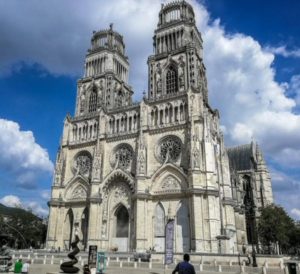
This avenue was created by the Bourbons precisely to have a frontal view of the Cathedral of San Cruz , and initially acquired the name of Bourbon Street.
If you visit the city from May 8, the day that celebrates the Feast of Joan of Arc , and until the entrance of autumn, the avenue you will see decorated with spectacular and colorful flags, among which you will identify the one of the city, yellow and red colors.
That day there are military parades under the flags that decorate the streets of the center, and a young girl is chosen who, like Joan of Arc , runs through the city on horseback.
Cathedral of the Holy Cross in Orleans
For its part, the cathedral of Orleans , Gothic style, has had a long process of construction, because in the same today you can see from 13th century chapels to 17th century chapels in its central area of neoclassical style.
In this area highlights the large rosette that represents the Sun King .
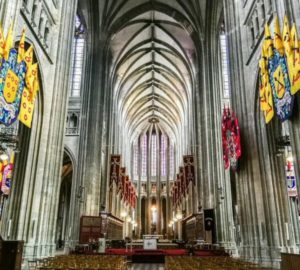
But in addition the frontal towers are of century XIX, as well as the show windows that show the history of Juana de Arco , realized right at the time at which it was tried that the Vatican declared it santa .
Also noteworthy is the wooden choir stalls, from the 17th century, as it was protected during the French Revolution .
Hotel Groslot, former city hall of Orleans
Almost in front of the cathedral you have the building of the old town hall known as Hotel Groslot .
It is a Renaissance mansion from the 16th century, when at the time it was like a small Loire castle, which has been the seat of the City of Orleans from the 19th century until the 80s.
This building that you can visit for free, which had an extension in the nineteenth century while maintaining its brick construction, is now used for celebrations of events and weddings.
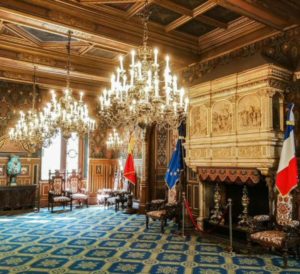
In the entrance courtyard you can see a bronze statue of Joan of Arc , in which you can see that, as a reflection of the resistance of the saint , the shots she received during the Second World War have been maintained .
Inside there is a copy of a famous painting by Ingres also dedicated to Joan of Arc , whose original is preserved in the Louvre Museum in Paris .
Historic center of Orleans
From the cathedral, going towards the Loire River , you arrive directly at the historic center of the city.
On your walk you will see corners with half – timbered houses from the XV and XVI centuries, which were brought to light from urban rehabilitation of the year 2000, and of which there are about 300 cataloged.
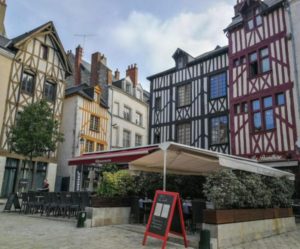
In this historic center there is no uniform architecture, but buildings of different ages and characteristics, as you will also see seventeenth-century houses built with bricks and white stone, with an aesthetic similar to that of the former building of the old town hall.
A corner to highlight is the Belfroi Tower of the fifteenth century, whose bell was used to warn of the attack of enemies and which was a symbol of the power of the city.
Burgundy Street
The Burgundy street is the main axis of the historic district and is also known as the street of the restaurants , which extend for two kilometers in length, and among which the Orientals abound.
That is the place where you will find more leisure environment in Orleans , although I also point out the initial stretch of Santa Catherine Street that starts at Martroi Square , where there are restaurants and bars open until 11 at night.
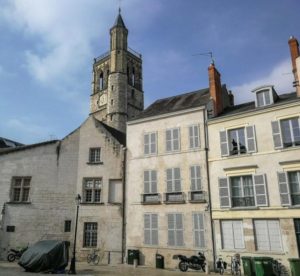
Dock of Chatelet on the Loire River
Before the Loire Valley was declared a World Heritage Site , the river area was a large car park in the area of the river was car parking.
From then on, this area was rehabilitated in such a way that the current Chatelet Pier and the river bank were recovered for the use of the inhabitants and visitors of Orleans ,
Then the so-called Plaza de Chatelet was opened with the aim of enabling a place with restaurants and leisure establishments, where there is now a leisure center with cinemas and an underground car park, as well as a garden with terraces on top of the buildings.
On the riverbank there are several ganguettes , typical places of leisure in the Loire Valley where you can drink, eat and listen to music, and where the students of the university meet.
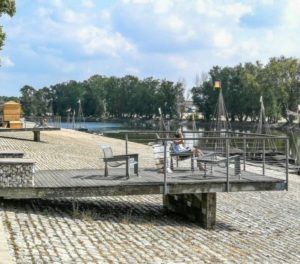
You can also eat in a boat-restaurant , or have a drink in another traditional boat.
Orleans currently has three kilometers of piers on the stretch where the city is crossed by the Loire River .
The first antecedent of the Quay of Chatelet is the first one that was made in the Roman-gala city, and then in the Middle Ages it had a great boom with thousands of boats that were dedicated to the transport of goods by the river.
The goods arrived from the Mediterranean through the Rhone River , and a route through the area of the Massif Central allowed them to be taken to the Loire .
On the other hand, from the Atlantic Ocean came the goods that came from America , such as cocoa.

But when the railroad arrived , whose first line in France was the one that united Paris with Orleans , the transport in train began to replace to that until then it had been realizing in boat by the Loire .
Traditional boat trip on the Loire River
On your visit to Orléans you can take a traditional boat trip on the Loire River .
Starting from the aforementioned Muelle de Chatelet , in summer you can sign up for the one-hour excursions sailing by traditional boat on the Loire River , during which you will get to know the history and vicissitudes of this famous river.

If you prefer, you can use the same boat in the transfer service to the nearby island of Charlemagne , an appropriate place for hiking.
It should be noted that every two years, in the month of September, the Loire Festival is celebrated , an event that brings together more than 200 river boats and in which each year they invite a different country.
Crypt of Saint Aignan
In your visit to Orleans you can see two crypts that are a sample of the religious tradition in the city.

Saint Aignan , who was the Bishop of Orleans , at the time of the expulsion of Attila and the Huns, in the year 451, tradition says he did a miracle with some wasps.
In his honor in the 5th century a church was built outside the walled city of the second century, and since then he became the patron saint of Orleans .
In the 11th century the crypt was built to store its relics, and two centuries later, the old building was replaced by a Gothic church.
Finally in the nineteenth century stopped being the patron saint of Orleans to be named Joan of Arc .
In fact nowadays its history is not well known in the city of Orleans itself , although you can enter its crypt during the guided tours organized by the tourist office .
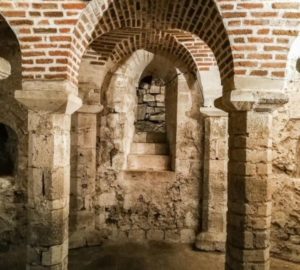
Crypt of St. Avit in Orleans
For his part, St. Avit was a monk and hermit who lived in the 11th century in Orleans , and tradition says he could heal by touching the sick, especially the blind.
To conserve its rest a crypt was also built under a church, but it was demolished in the seventeenth century, although it was discovered during works carried out in the 19th century in a school, and now it can also be visited.
Night walk La Balade Magique
One way to visit the historic center of Orleans is during the night walk the Balade Magique , a cultural offer of the city’s tourist office .
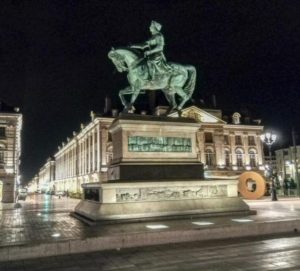
During this walk of just over two hours you will go through Juana de Arco streetto go to the cathedral area and the old town hall, Hotel Groslot , then head towards the historic center and complete the visit in the Loire River area .
Through the night lighting that has been installed in recent years in the main monuments and streets of the city you can see the most outstanding places and understand the long history of Orleans .
Floral Park of the Source
Your visit of the city of Orleans can be completed knowing the Floral Park of the Source , the most visited attraction of the department of Loiret , and the place where is the spring where this other river whose name means the small Loire is born .
This large botanical park that covers 35 hectares and is a haven of peace to walk, is in front of the facilities of the University of Orleans , about 10 kilometers south of the historic center.
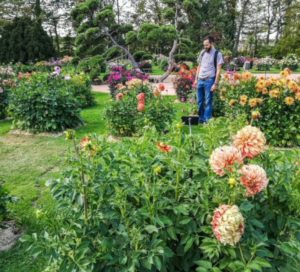
It is a zone of great tradition of flowers because the historical floods of the Loire by the same facilitated its plantation.
From a lake located in the park you can see the building of a chateau , and in your visit you will walk through different gardens in which there is a great diversity of flowering plants.
A corner that you should not miss is the tropical garden where you can see numerous tropical butterflies fluttering around you, some of them of enormous size.
How to get to Orleans
In front of your visit, it is very usual that Orleans is a stop on the route by car for those who travel to Paris from the south of France, or among those who make the route through the Loire Valley by car or bicycle.
But I will tell you that a very good way to go to Orleans is to go by TGV high-speed train from the southern station of Paris Austerlitz , from where it is only an hour away.
 Countries To Travel Travel Tips and Plans
Countries To Travel Travel Tips and Plans

